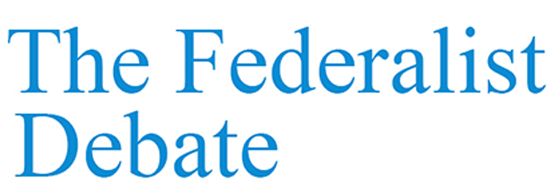A Compelling Obligation: Creating the Vertical Alliance Africa-Mediterranean-Europe*
Jean-Louis Guigou and Pierre Beckouche
Jean-Louis Guigou is President and founder of IPEMED (Institut de prospective économique du monde méditérranéen), Paris.
Pierre Beckouche is Professor of Geography at University Paris 1 Panthéon-Sorbonne
In the present chaotic world where it is difficult to look confidently at the long term, many heads of state are steering by sight. China, however, will complete in 2049 the silk roads that will link Europe and Africa to Asian interests. In Africa, some states give themselves a long-term perspective: Morocco rejoined the African Union last year and is developing major projects such as the highway from Agadir to Dakar along the Atlantic and the pipeline from Nigeria; and Algeria the project of a trans-Saharan road that would connect Algiers-Cherchell to Lagos in Nigeria, that is, 6.000 km of highway with branches to Tunisia, Niger, Mali. Egypt is planning the modernization of the Suez Canal, the gas hub to be built in the Eastern Mediterranean, the large free trade zone, and the “Cape Town to Cairo” road. Ghana’s President declares his will to break with the past and traces the path of an ambitious, autonomous Africa, linked to Europe in a balanced relationship.
President Macron spoke of his vision of anchoring France to Europe, Africa and the world in an address to the French ambassadors, on August 29, 2017: “the strategy that I want to implement is to create an integrated axis between Africa, the Mediterranean and Europe. We must link together, at last, the European and the African continents across the Mediterranean; therefore, the Maghreb will remain a central priority for France. It is in Africa that the future of the world will be in large part decided”. He reaffirmed again the need to tie up the two continents in Ouagadougou and Abidjan, on November 27, 2017.
We adhere with deep conviction to this vision of a common AME axis, because it is both ambitious and realistic:
- Europe is already the largest investor in Africa and its largest customer. More than three-quarters of the international trade of the EU countries is carried out with Russia, the southern Mediterranean countries and Africa – even if Europe’s commercial positions in Africa are losing ground in the face of the Chinese offensive.
- The internationalization of exchanges leads to globalization, but also to a regionalization of certain activities which benefit from the advantage of geographical proximity and economic complementarity. For example, the NAFTA has brought the economies of the United States and Mexico closer together, and the North and South America countries as a whole now make 56% of their exchanges between them. Also, the integration of the East Asian countries has increased their exchanges in 30 years from 30% to almost 60%. In the absence of a regional North-South integration, Europe will be stifled by the China-US G2, and Africa will be dominated by the former.
- With 500 million aging inhabitants, Europe must make the choice of an accelerated development of Africa, which will count 2.5 billion inhabitants in 2050. The markets are and will be more and more to be found in the South. It’s not just about business: developing an economic and industrial partnership with Africa, thanks to the active contribution of diasporas, with the aim of transforming locally its immense natural and human resources, is the best way to contribute to its development
- Finally, this vision is realistic in view of our common challenges such as terrorism, uncontrolled immigration, global warming and the defense of common moral values, that require the sharing of objectives and approaches.
The strategy to be put in place must draw on a number of mechanisms and institutions that were proved successful in East Asia and the Americas .
First there must be a foundation that brings together experts, intellectuals, representatives of civil society and business leaders working to accelerate interconnections, technical networks (water, transport, electricity), financial and cultural aspects (recognition of university degrees, student exchanges...). To date, there is nothing between Europe and Africa comparable to the Economic Commission for Latin America and the Caribbean (ECLAC, 700 researchers, $ 40 million per year) for the Americas, or the Economic Research Institute for ASEAN and East Asia (ERIA, 15 laboratories and $ 30 million per year) for East Asia.
There must be also an institution with the financial instruments for development, already available in the Americas (Inter-American Development Bank-IDB) and in East Asia (Asian Development Bank-ADB and Asian Infrastructure Investment Bank-AIIB), to ensure the North-South mobility of capitals, of which the ADB and the European Investment Bank-EIB could be the model platforms. The third mechanism would be an economic partnership between the countries of the North (EU) and the countries of the South (AU). Finally, there should be a venue for political consultation comparable to the Organization of American States (OAS) or the East Asia Summits, with a charter expressing the firm will to break with and get rid of the predators and the debris of the past, and expressing the desire of a strong, autonomous Africa linked to Europe in a relationship of common activities. All of these four tools should take the form of a new treaty between Europe and Africa, that would replace the Cotonou agreements which expire at the end of 2020. This “New Deal” would give a meaning to the future of Europe; and it would provide a vision to the youth of both continents and satisfy the African and European civil societies, that expect from Europe and Africa new and innovative responses to the challenges of today and tomorrow.
* A version of this text has been published in the newspaper Les Échos on June 8, 2018

